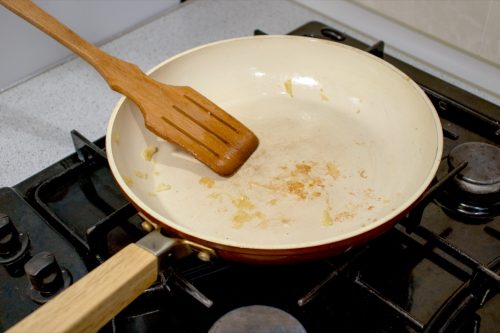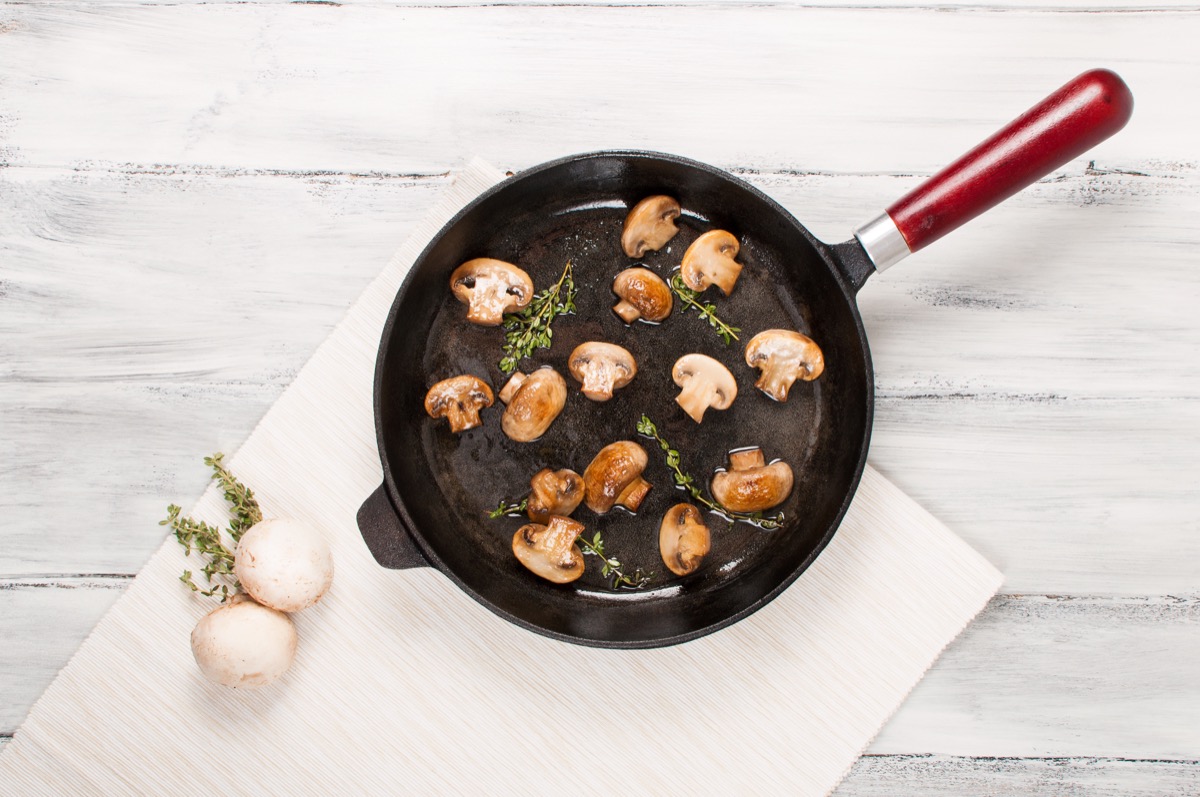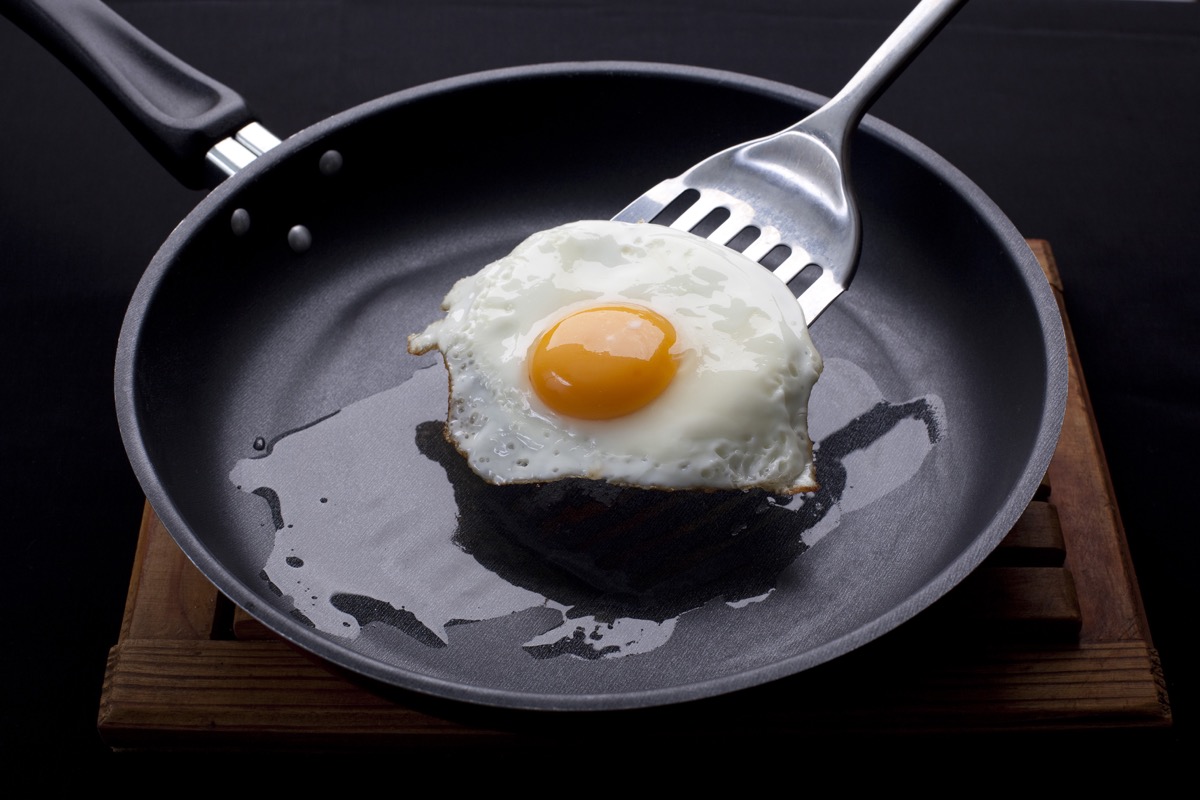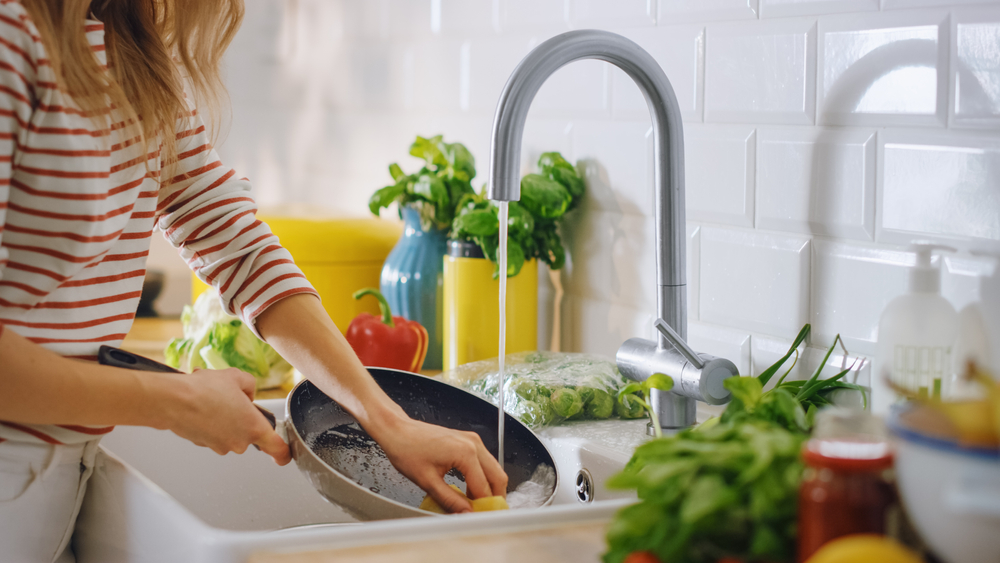Is Ceramic Cookware Safe? How to Use It Correctly

When Teflon pots and pans were invented in the 1950s, they revolutionized the market thanks to their ease and convenience. It would be decades before the public learned that these particular pieces of cookware contained chemicals that increased the risk of certain health conditions—cancer included—and had a harmful effect on the environment.
Though non-stick cookware is now considered safe for everyday cooking as the result of a new legislature passed in 2013, it can still begin to break down at high temperatures exceeding 500 degrees Fahrenheit. Old or damaged non-stick cookware can also release toxic chemicals known as Perfluoroalkyl and Polyfluoroalkyl Substances (PFAS) into the air or leach chemicals into your food—meaning it’s best to ditch any non-stick pots and pans with scratches or dents.
One popular alternative is ceramic cookware, which replaces more traditional non-stick coatings with a non-toxic ceramic outer layer. However, given the history, it’s fair to wonder: Is ceramic cookware safe? Read on to hear what experts have to say about how it stacks up to the competition and how to use it correctly.
RELATED: The Best Non-Toxic Cookware for the Healthiest Meals.
Is Ceramic Cookware Safe?
Ceramic cookware is typically made with a metal base of stainless steel or aluminum and coated with a kiln-baked, ceramic outer layer. This selection of materials offers a safe alternative to pots and pans made with standard non-stick coatings.
Experts say that though they deliver some of the same convenience, ceramic cookware is non-toxic and made without the harmful “forever chemicals” associated with other non-stick cookware.
Is Ceramic Cookware as Effective as Other Non-stick Options?

Ceramic cookware is less likely to stick than stainless steel, cast iron, or aluminum pans, but that doesn’t mean it’s necessarily as effective as more traditional non-stick options. In fact, many customers have taken to social media to share their disappointment in ceramic-coated kitchen products.
“The lifespan of ceramic is a lot shorter than other pans,” shared chef and culinary instructor Kelly Scott in a TikTok video. She says she’s cooked on every pan type on the market.
“Every time you heat up a ceramic pan, it naturally releases a little bit from whatever is underneath the ceramic, and that means that the coating is wearing out every single time you heat it, no matter the temperature,” she explained.
RELATED: How to Season a Cast Iron Skillet, According to Cooking Experts.
How to Cook With Your Ceramic Cookware
If you do decide to switch to ceramic cookware, there are a few simple rules to follow while cooking that can help you avoid needless damage.
Monitor your temperatures.

According to Aleka Shunk, founder and recipe developer at the food blog Aleka’s Get Together, ceramic cookware can be sensitive to sudden changes in temperature. That’s why, if you plan to preheat your pots or pans, you should only do so on low or medium heat for three to five minutes before adding oil or fat to avoid cracking.
“Using high temperatures can degrade the non-stick coating over time, reducing the pan’s lifespan,” agrees Jamil Bouchareb, the founder and CEO of Restaurantware. “Always cook on medium to low heat to preserve the coating.”
Don’t season your pan.

When cooking with ceramicware, it’s also counterproductive to try to season your pots and pans.
“Ceramic cookware does not require seasoning because it naturally has a non-stick surface. This means less food residue stays on the pan, making cleaning easier,” Bouchareb says. “If you prefer cookware that needs seasoning, consider cast iron or carbon steel. These materials develop a non-stick surface through seasoning, which can be done at home or purchased pre-seasoned, offering a durable and convenient alternative to traditional non-stick cookware.”
Don’t scratch the coating.

Compared with other types of cookware, your ceramic pots and pans may be extra vulnerable to dents and dings.
“The silicon oxide coating on ceramic cookware is more brittle and prone to scratching than traditional non-stick coatings,” says Bouchareb. “Avoid using sharp tools or knives on the surface to maintain its non-stick properties and extend its longevity.”
Instead, Shunk recommends using wooden or silicone utensils to prevent scratching the surface of your cookware.
RELATED: I Finally Splurged on Caraway Pans—Here’s Why I Wish I Hadn’t.
How to Clean Your Ceramic Cookware

How you clean your pots and pans can also help mitigate damage. Here’s what the experts recommend.
Let it cool before you begin washing it.
Just as your ceramic pans can be damaged by sudden high heat, they can also be damaged by a sudden drop in temperature. For this reason, Shunk warns against placing your hot pan in a cold sink, noting that making this mistake can also lead to cracks.
Find out whether it’s dishwasher safe.
Not all ceramic cookware has the same needs.
“While some ceramic pans are dishwasher-safe, not all are. Always check the user manual or the manufacturer’s website for your specific model’s care instructions before using a dishwasher,” advises Bouchareb.
Avoid abrasive cleaning tools.
Even if you don’t use a dishwasher, washing your ceramic cookware by hand should be a cinch.
“The silicon oxide coating on ceramic cookware is both water- and oil-resistant, ensuring easy food release during cleaning. This eliminates the need for soaking or vigorous scrubbing,” says Bouchareb.
Another important rule is that abrasive cleaning tools such as scouring pads can damage the coating. “Gentle cleaning with dish soap and a soft sponge is typically sufficient to clean any ceramic pan,” Bouchareb adds.
Dry it completely before putting it away.
Finally, it’s important to dry your pan before you put it away or put it back on a burner after washing it.
“Any excess moisture beneath the surface can lead to cracking,” says Shunk.